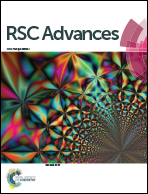Improvement of PEDOT:PSS linearity via controlled addition process
Abstract
Poly(3,4-ethylene dioxythiophene):poly(styrene sulfonate) (PEDOT:PSS), which is a conductive polymer, has gained immense attention as a next-generation transparent electrode. However, in order to realize its practical application, it is imperative that its optical and electrical properties should be improved. Generally, acid dopants are added to improve optical and electrical properties. In this study, however, we replaced the batch process used for manufacturing PEDOT:PSS with a controlled addition process to improve its optical and electrical properties efficiently without additional additives and processes. In this process, the rate of polymerization and the structure of the product could be regulated by controlling the amount of monomer and catalyst. Moreover, we investigated the efficiency of the controlled addition process both theoretically and experimentally. The proposed approach was used to increase the linearity of PEDOT and the proportion of PEDOT attached to the PSS chain to improve transmittance by 6.2% (73 to 79.2% at 100 ohm) and conductivity by 39.68% (446 to 623 S cm−1). It was determined that the properties of PEDOT:PSS could be improved using the proposed method during the polymerization process.



 Please wait while we load your content...
Please wait while we load your content...